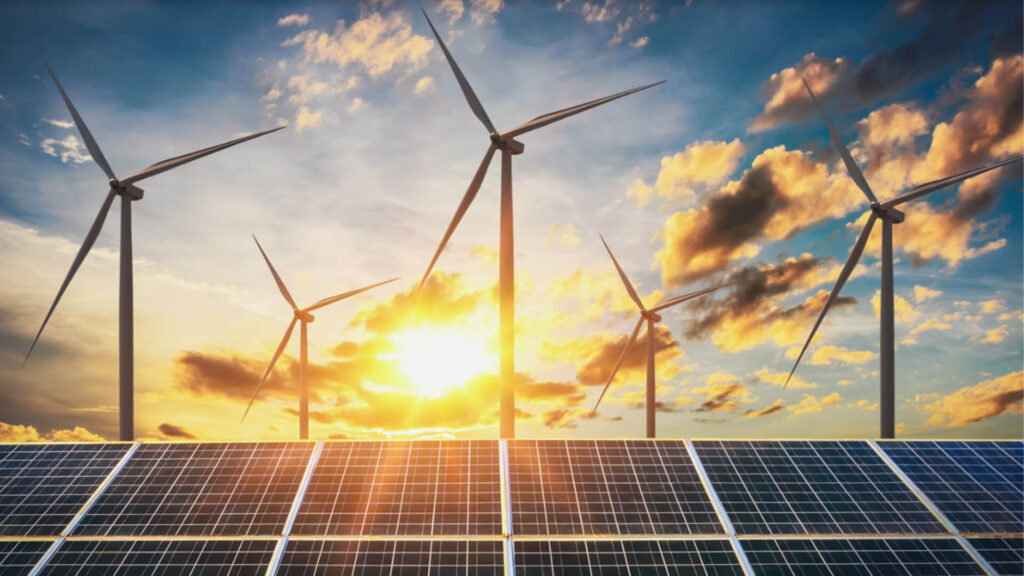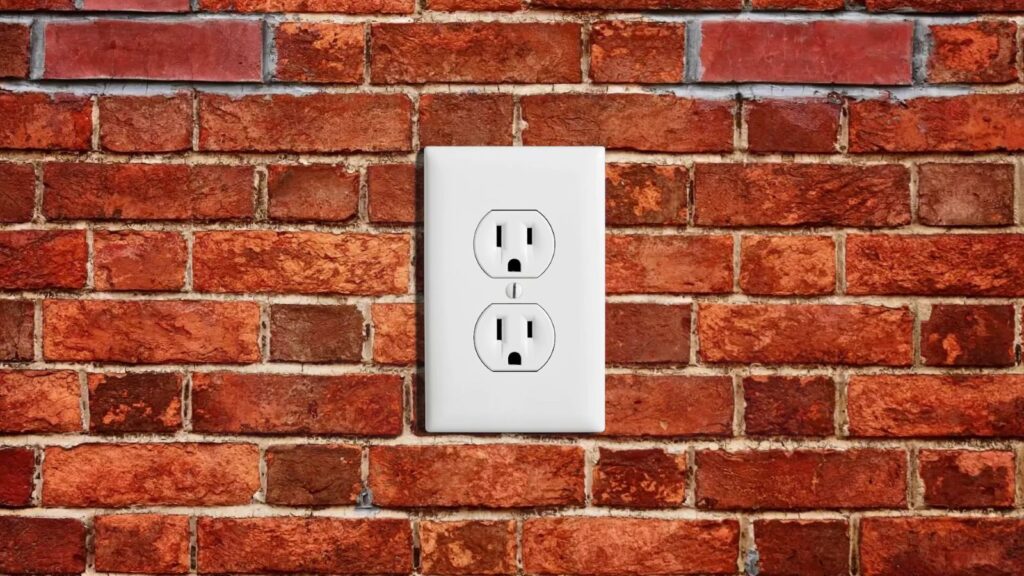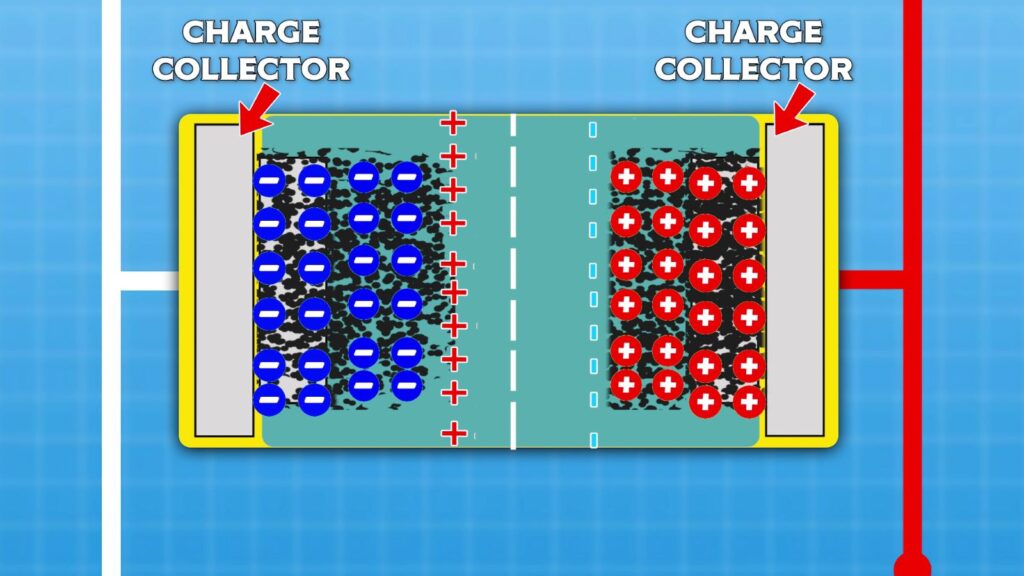The bricks we use to build our homes will soon be able to store electricity, just like batteries. Yes, in the future, it will be possible to use bricks as an alternative of batteries. As you all know, most of our electricity is currently generated from fossil fuels, which have limited reserves and cause significant harm to the environment.

Green Energy Will Save the Future
Nowadays, renewable energy is the captivating subject of abundant discourse – solar power, wind power, and hydropower are all the source of renewable green energy. Until now we have somehow manage to produce green energy, but it is necessary to store this energy because the amount of energy generated is not always equal to the amount being used. For example, if a solar plant is producing 3 kilowatts of electricity, it doesn’t mean that all 3 kilowatts will be used instantly. So we need to store it.

Moreover, when it comes to solar or wind energy, it is not constant. We have nights when there is no sunlight, and there can be times when there is no wind to turn the turbines. However, people still need electricity during those times, so we must store it.

How we Store Energy Now?
Currently, the most efficient method for energy storage is lithium-ion batteries. While lithium batteries have become cheaper, having a large number of cells for a power grid can still be expensive. Additionally, lithium is a natural metal with limited resources, and lithium batteries require proper maintenance and protection.

We need a better alternative, and it is currently being suggested that bricks can be used to store electricity. Let me explain how this would be beneficial.

How Power Brick Would be the Future?
Imagine your house is built with bricks that can store electricity. Essentially, your house becomes a large battery, and you have installed solar panels on the roof. The electricity generated by the solar panels will be stored in the bricks of your house, eliminating the need for separate batteries.

Currently, the amount of energy that can be stored in bricks is only about 1% compared to lithium-ion batteries. However, researchers believe that in the future, the energy density of bricks can be significantly improved, making them a viable replacement for lithium-ion batteries. In essence, our homes will function as large batteries, storing electricity.

And these bricks are not batteries; they are super capacitors. As batteries store energy chemically super capacitors store electrical energy in a form of electrostatic. Super capacitors can be charged pretty quickly, and can handle high current draw while discharge. You can say one can suck the full energy of the super capacitors almost instantly. Batteries definitely can’t do that. Lithium batteries do have pretty high discharge current and may deliver more than that for what it’s rated for but frequent attempt of discharge a li ion batteries more than it’s rated output will short it’s life. In comparison to lithium batteries, which have a charge-discharge cycle of around 500, these construction bricks have a cycle of approximately 10,000.

Super capacitors Vs Batteries
So, what is the difference between super capacitors and batteries? The internal structure of both is quite different. Batteries have two electrodes made of different materials, and they are separated by an electrolyte. When you connect a load to a battery, the electron flow starts from the negative terminal, passes through the load, and reaches the positive terminal. That’s basically over simplified explanation of a battery.

On the other hand, capacitors consist of two plates separated by a non-conducting material called Dielectric. When you connect a capacitor to a battery, current flows, and the capacitor starts to charge. Positive charge is stored on one plate, and negative charge on the other. That creates an electric field between the plates. Even if you disconnect the battery, you will still have electricity in the capacitor. As the capacitor discharges through a connected load, it releases the stored positive and negative charges through the load – reducing the electric field, until the capacitor is fully discharged.

As I have mentioned batteries can store a significant amount of energy, but they cannot release all of it at once. If you draw a very high current from a battery, its lifespan decreases. Capacitors, on the other hand, cannot store as much charge, but they can discharge it in a short duration.
Also Read: Cooler Water Level Sensor and Pump Auto On/Off Circuit
Supercapacitors are a combination of both. They can charge quickly and store a substantial amount of energy, although not as much as batteries. However, they can discharge in a short duration, similar to capacitors. Capacitance is measured in Farads. A normal capacitor may have a capacitance of a few microfarads or even picofarads, a supercapacitor’s capacitance could be in farads, which is millions of times higher than a standard capacitor. Ex. 400F, 300F etc.

Supercapacitors also have two electrodes, separated by an electrolyte. In addition to the electrolyte, a thin insulator made of carbon paper or plastic is used. The electrodes are coated with a porous material, such as powdered charcoal, which increases the surface area.

When you charge a supercapacitor, positive and negative charges build up on the electrodes. But this time, the electrolyte acts as an insulator. This means that positive ions in the electrolyte are attracted to the negative electrode, and negative ions are attracted to the positive electrode. This is commonly referred to as electrostatic attraction.

The electric charge will be stored between the tiny space of the electrodes and ions. In one plate, two charges are stored, and this phenomenon is known as the Helmholtz double layer in the language of physics. This increases the surface area of the plates and the overall capacitance.

However, there are different types of supercapacitors, such as EDLC (Electric Double-Layer Capacitor) and Pseudocapacitors (also known as Pseudo Supercapacitors) and Hybrid Supercapacitors, but we won’t go into detail about them now.
How Bricks Can Store Electricity?
Naturally red bricks are highly porous, which provides us with a large surface area. According to researchers, a normal brick can be turned into a energy reservoir something like batteries but as I have mentioned they are supercapacitors; through a simple chemical treatment. Red bricks, which contain iron oxide (commonly known as rust). First, the red brick is exposed to hydrochloric acid vapor. The gas enters the pores of the brick and accumulates there. Then, a reaction occurs between the iron oxide and the acid vapor. In this reaction, the iron oxide dissolves in the acid vapor, resulting in the production of highly reactive Iron atom specifically Fe3+ cations.

Next, the brick is immersed in EDOT (ethylene dioxythiophene) vapor. EDOT is an organic sulfur compound that readily reacts with Fe3+, producing a conductive polymer called PEDOT (poly(3,4-ethylene-dioxythiophene)). This reaction takes place at around 160 degrees Celsius for approximately 14 hours.

As time passes, the PEDOT nanotubes gradually fill the porous structure of the brick. After the completion of the process, the nanotubes completely cover the brick, giving it a deep blue color.

Finally, an epoxy coating is applied to the brick, which acts as an electrolyte, binder, and separator. It also makes the brick waterproof, allowing it to be used even under water.
Will Power Brick Be Used?
To be honest, the energy density of PEDOT-coated bricks is still quite low. You would only get around 1.6 Wh of electricity per square meter, which means a 10ft by 20ft wall would yield around 20 Wh of electricity. However, this technology is still in the early stages of development and not yet suitable for practical use. Every technology has to start somewhere. Even incandescent light bulbs, which are now almost obsolete, were under development at one time.
I am providing the research papers on power bricks so that you can read them.
In the Concluding Lines…
Yes, power bricks could be the future but it needs time to be property developed. Scientists says that they discovered some ways that can help to increase the energy density. If it will happen then we will have some that can store energy but while producing them doesn’t emit any harmful gas or chemicals. As we use thousands of bricks in our wall so with proper energy density these walls will store sufficient power that we can use.
